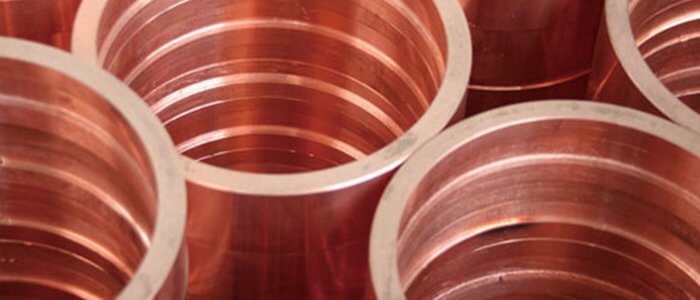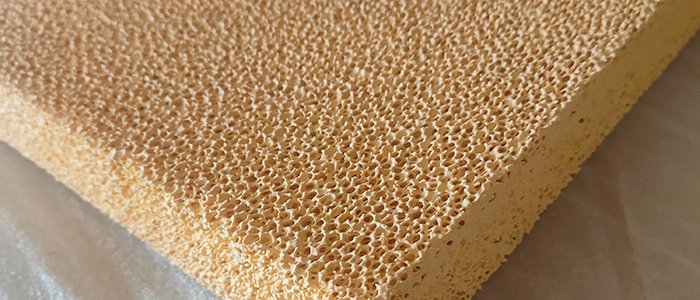Introduction:
In the heart of Russia’s industrial landscape lies a tradition that spans centuries—the art of brass casting. From its origins during the visionary reign of Peter the Great to the modern era of state-of-the-art facilities, this article unravels the captivating world of Russian brass foundries. We delve into the intricate process of brass casting, where molten alloys transform into masterpieces, guided by skilled artisans and cutting-edge technology. Alongside, we uncover the unsung heroes—the ceramic foam filters—essential in perfecting each piece. Join us on a journey through time, innovation, and craftsmanship in the story of Russian brass foundries.
Russia’s Storied Tradition of Brass Casting and the Crucial Role of Ceramic Foam Filters
Russia, a nation known for its rich cultural heritage, extends its legacy into the realm of manufacturing through its illustrious brass foundries. These industrial bastions are the lifeblood of the nation’s production sector, supplying diverse industries with top-notch brass components. As we delve into the world of brass foundries in Russia, we’ll not only uncover their historical significance but also explore the intricate process of brass casting and the pivotal role played by ceramic foam filters in this age-old craft.

A Historical Perspective: From Peter the Great to Modern Marvels
To truly appreciate Russia’s contemporary brass foundry industry, we must first immerse ourselves in its historical roots. Brass casting in Russia dates back to the 17th century, a time marked by the visionary leadership of Peter the Great. Under his reign, the nation witnessed the establishment of the first foundries, marking the inception of a tradition that continues to flourish today.
Fast forward to the modern era, and Russia boasts a constellation of state-of-the-art brass foundries. These facilities are equipped with cutting-edge machinery and staffed by skilled artisans who preserve the time-honored craft of brass casting. Prominent foundries can be found in industrial hubs like Moscow, St. Petersburg, and the Ural Mountains, each contributing to the nation’s manufacturing prowess.
The Brass Casting Process: Where Artistry Meets Precision
At the heart of any brass foundry lies a meticulous and highly precise manufacturing process that transforms raw materials into intricate brass components. The key steps in brass casting unfold as follows:
1. Melting: The cornerstone of brass production involves melting a precise combination of copper and zinc in predetermined proportions. This molten concoction forms the foundation of all brass products.
2. Molding: Following the molten brass’s creation, it is carefully poured into molds. These molds come in various forms, crafted from materials such as sand or ceramics, tailored to the complexity of the component being created.
3. Cooling and Solidification: As the molten brass is poured into molds, it undergoes the crucial transition from liquid to solid. The rate of cooling is meticulously controlled to ensure the brass attains the desired properties, such as hardness and strength.
4. Removal and Finishing: After solidification, brass components are delicately extracted from the molds and subjected to an array of finishing processes. These include trimming excess material, polishing, and rigorous quality inspections to meet exacting standards.
5. Casting Variation: Brass casting can take various forms, each offering unique advantages depending on the application. These include sand casting, investment casting (lost-wax casting), and die casting, with each method tailored to specific requirements.
The Unsung Heroes: Ceramic Foam Filters
Now, let’s shed light on the unsung heroes of the brass casting process – ceramic foam filters. These unassuming yet indispensable components find their place within the molds before molten brass is poured. Their significance in the process is multi-faceted:

1. Filtration: Ceramic foam filters serve as vigilant gatekeepers, removing impurities and contaminants from the molten brass. This purification process is the bedrock of producing brass components that meet the most stringent quality standards.
2. Flow Control: Filters play a crucial role in regulating the flow of molten brass into the mold cavity. This meticulous control ensures a smooth, even fill, reducing the likelihood of defects in the finished component.
3. Temperature Control: Maintaining a consistent temperature within the mold is pivotal, and ceramic foam filters help achieve this stability. This temperature control contributes to the quality and structural integrity of the brass casting.
4. Reducing Inclusions: Inclusions, be they oxides or other foreign particles, pose a threat to the integrity of brass components. Ceramic foam filters are instrumental in minimizing these intrusions, resulting in higher-quality brass products.
Innovations in Russian Brass Foundries: Meeting the Demands of the Modern Age
Russian brass foundries do not rest on their laurels; they continually embrace innovation to enhance efficiency and product quality. Some notable innovations include:
1. Automation and Robotics: Automation and robotics have found their place in modern Russian brass foundries. These systems handle tasks such as pouring molten brass, ensuring precision and consistency.
2. Computer-Aided Design (CAD): CAD software has become a cornerstone of brass component design, facilitating the creation of intricate molds and patterns with unparalleled precision.
3. Energy Efficiency: Sustainability and energy efficiency are at the forefront of modern foundries. Investments in eco-friendly technologies and practices contribute to reducing the environmental footprint.
4. Material Research: Constant exploration of new brass alloys and compositions aims to create brass with enhanced properties, meeting the evolving needs of various industries.
Applications of Russian Brass Foundries: Shaping Diverse Industries
Russian brass foundries are not confined to a single industry; they serve a myriad of sectors, including:
1. Automotive: Brass components are integral to the automotive sector, finding their place in engine parts, transmissions, and various fittings.
2. Plumbing and Sanitary Fittings: Brass’s corrosion resistance and durability make it a preferred material for plumbing and sanitary fittings, including faucets, valves, and connectors.
3. Aerospace: Precision and reliability are paramount in the aerospace industry, and Russian brass foundries supply specialized components for aircraft and spacecraft.
4. Electronics: The exceptional electrical conductivity of brass makes it a staple in electronic connectors, terminals, and switches.
5. Construction: Architectural hardware, decorative elements, and structural components benefit from brass’s aesthetic appeal and functional properties.
Challenges and Opportunities: Navigating the Path Ahead
Russian brass foundries, despite their strong presence, face challenges and opportunities on the global stage:
Challenges:
1. Global Competition: Intense competition from manufacturers worldwide necessitates consistently delivering high-quality products while remaining cost-competitive.
2. Environmental Regulations: Adhering to stringent environmental regulations is both a challenge and an opportunity, encouraging innovation in cleaner production methods.
Opportunities:
1. Export Potential: Russian brass foundries can expand their reach into international markets by offering competitive pricing and top-tier products through strategic partnerships.
2. Research and Development: Investing in research and development to create advanced brass alloys and manufacturing processes can confer a competitive edge in producing specialized components.
3. Digital Transformation: Leveraging digital technologies for process optimization, data analytics, and supply chain management can enhance efficiency and customer satisfaction.
Conclusion:
In conclusion, Russia’s brass foundries stand as beacons of tradition and innovation, contributing substantially to the nation’s manufacturing landscape. With an unwavering commitment to quality and sustainability, they have carved a niche in the global brass casting industry. By surmounting challenges and seizing opportunities, Russian brass foundries are poised to continue their illustrious journey, shaping the future of manufacturing with their timeless craft.

